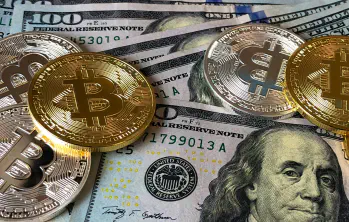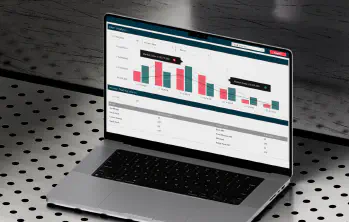Does borderless trading require a revised approach to trade surveillance?
Trade surveillance has always been an integral part of the broader regulatory framework for those operating in the financial services industry. However, as markets evolve and borderless trading becomes ever more commonplace, the nature of these trade surveillance systems has changed. We have seen a necessary evolution in both the complexity and sophistication of trade surveillance technology in order to maintain market integrity and promote regulatory compliance.
While tempting, it’s important not to further complicate the topic of trade surveillance in the context of single-border and borderless trading. The broader overarching goals remain: monitoring proprietary and client trades to identify and investigate suspicious trading patterns while ensuring that guilty parties are suitably prosecuted.
Understanding borderless trading
The best way to describe borderless trading is the seamless exchange of financial instruments across different countries without regulatory friction. This prompts the question: what is the difference between trade surveillance across borderless and single-border markets?
In reality, there are limited differential factors. The risks, vulnerabilities, and technological challenges remain the same but are on a wider scale with the largest challenge belonging to National Competent Authorities (NCA’s) who are responsible for spearheading, potentially international, prosecutions. We still identify market manipulation through executions, cancellations, and amendments, whether a trade on the London Stock Exchange originates in France or England or a trade on the US markets were to originate in the UK (as we will discuss later).
This is very different from, for instance, arbitrage situations, which are perfectly legal and tend to occur where a market is less efficient than the London Stock Exchange. In this scenario, it is also important to appreciate the broader benefits of borderless trading, which enhances market efficiency and liquidity.
Borderless market, responsibilities and prosecution
This brings us to the subject of prosecution. Which parties take responsibility for prosecuting illegal trading activity, and how should cross-border regulators cooperate? It is not as big of a problem within the EU due to the harmonisation of trading regulations, but further afield, the situation is less clear. Where US counterparts are dealing in EU markets, or vice versa, the responsibility for prosecution may not be obvious and the difficulties in ensuring extradition are not small.
To circumvent the issues brought about by suspicious cross-border trading, global financial regulators must widen their purview and take a more global, collaborative approach to compliance across investment markets.
Global regulatory cooperation
A critical part of worldwide trade surveillance is the cooperation of global regulators. This involves several factors, such as data sharing, information requests, system integrations, and defining specific responsibilities concerning investigations and prosecutions.
Examples of cooperation include:
- IOSCO (International Organization of Securities Commissions) and national regulators
- FATF (Financial Action Task Force) and regional regulatory bodies
- EU and US regulatory cooperation
- FINRA (Financial Industry Regulatory Authority) and international counterparts
- G20 and global regulatory frameworks
To put this in context, under IOSCO’s 2002 multilateral memorandum of understanding, information exchanges have increased from just eight in 2003 to 5567 in 2022. It’s also worth noting that ISOCO membership regulates 95% of the world’s security markets across 130 jurisdictions.
The challenges of implementing borderless transaction surveillance
Case Study: Navinder Sarao and the “Flash Crash”
Let us look at the case of the “Hound of Hounslow”, Navinder Sarao. In 2010, he caused panic across global stock markets from a bedroom in his parents’ home in Hounslow. He instigated a “flash crash”: US markets briefly fell by around $1 trillion before recovering, but not before the trader had banked a multi-million dollar profit.
In a process known as “spoofing,” Sarao used software to manipulate prices on the Chicago Mercantile Index order book. Having recognised that trading algorithms attempted to mimic order book trades before execution, his trading strategy was based on placing and quickly cancelling trades, but not before tricking the algorithms. Heavy buying/selling by automated systems (which also caught the eye of traders and activated stop-loss limits) allowed Sarao to perfectly time counter trades and bank huge profits.
Case Study: The multi-bank LIBOR scandal
Manipulation of the LIBOR markets between 2003 and 2012 went unnoticed until regulators from the US, Canada, Japan, Switzerland and the UK began working together. Manipulating the LIBOR rate allowed traders to bank huge profits on derivatives but impacted the cost of finance worldwide, with LIBOR used as a base rate for many products.
Banking giants such as Citigroup, JP Morgan Chase, Barclays, Royal Bank of Scotland, and UBS were caught up in the scandal, prompting a new era in cross-border regulation. The scandal was revealed due to a separate Barclays Bank criminal settlement, leading to a more in-depth investigation. As public and private prosecutions continue, fines are now in double-digit billion dollars, although the impact on market trust has been much more far-reaching.
Should trade or eComms surveillance at the time have identified market manipulation? Can we say with certainty that a similar situation could not emerge in the future? How do firms create compliance programmes that can identify post-trade events and capture pre-trade risks?
AI and machine learning are coming to the fore with greater regulatory oversight. With the LIBOR scandal to learn from, it’s unlikely such large-scale manipulation would go unnoticed today, but both regulators and financial firms must remain vigilant.
Solutions and strategies for post-surveillance investigation
While real-time surveillance is sometimes leveraged by exchanges, the vast majority of trading firms solely rely on post-trade surveillance. While systems powered by cutting-edge AI technology that monitor trading in real-time di exist, a more simple solution is often the best choice. Regulators must examine past instances of market abuse in order to learn and protect themselves against similar future infringements.
When Navinder Sarao was convicted of market manipulation, in this case, “spoofing,” by creating false and misleading impressions of price activity for trading bots and high-frequency traders, US prosecutors offered him a deal. After extradition to the US, having spent four months in Wandsworth Prison, he was allowed to return to the UK before sentencing. In exchange, he has been helping authorities catch others attempting to manipulate markets, explaining how the software was able to leverage his influence over traders, prompting the infamous “flash crash” of 2010.
A greater understanding of these illegal trading strategies, how they work, and how to combat and identify them as quickly as possible will help broader trade surveillance going forward. In theory, these “spoofing” strategies are very simple, but knowing how they work and the attention to detail will help regulators.
Do existing regulations need to be adapted to manage increases in cross-border trading?
As borderless trading grows, do existing regulations need to change to address specific challenges? Enhanced clarity regarding responsibilities, clear definitions of regulatory boundaries, and confirmation as to where the ultimate power of prosecution lies are all vital pieces of information which must be incorporated if cross-border regulation is to succeed.
The Navinder Sarao saga shows that regulators can work together. They can take a sensible approach to prosecutions and leverage the threat of jail sentences with one eye on the longer term.
Ironically, insider knowledge of the system used by Navinder Sarao will help teach AI-assisted trade surveillance systems in the future as well as aiding human-set surveillance parameters although it is by its nature retrospective and can’t eliminate such activity at source. This valuable insider knowledge will help identify similar emerging scenarios, allowing regulators to take more prompt action.
There’s no doubt the framework is there, progress has been made, and historic levels of regulatory tribalism have certainly been toned down, but it’s important to continue evolving approaches and being aware of the latest developments in both the pattern and practice of trading.
Future outlook
At eflow, we provide a range of cutting-edge reporting and surveillance services, allowing companies in the financial services industry to fulfil their ever-growing regulatory obligations. Our TZTS Trade Surveillance and Market Abuse solution will automatically monitor your trading activity, identifying suspicious behaviour and gathering evidence to support regulatory reporting. This, together with our TZEC module providing eComms surveillance will allow for an integrated approach to surveillance and risk monitoring covering both pre and post trade activity to help generate a more comprehensive overview of risk.
Conclusion
In answer to the original question in this article, borderless trading does not require a different type of trade surveillance, but it does prompt questions about the responsibility for prosecuting those manipulating markets. There will still be challenges, some of which will be down to regulators protecting their domains and others to local regulations and integrating new technology.
Trade surveillance is less challenging in homogeneous environments such as the EU, where all countries share regulatory priorities. The harmonisation of rules and regulations also creates a much firmer base for prosecutions, identifying responsibilities, accountability and legal powers before the event.
Even though we are unlikely to see a bona fide global regulator, with financial services integral to many economies such as the UK, these bodies will need to work more closely in the future.
If you are concerned about your company’s ability to retain control of trade surveillance in an ever-changing, ever-expanding market, let’s book a consultation and look at your situation in more detail.



